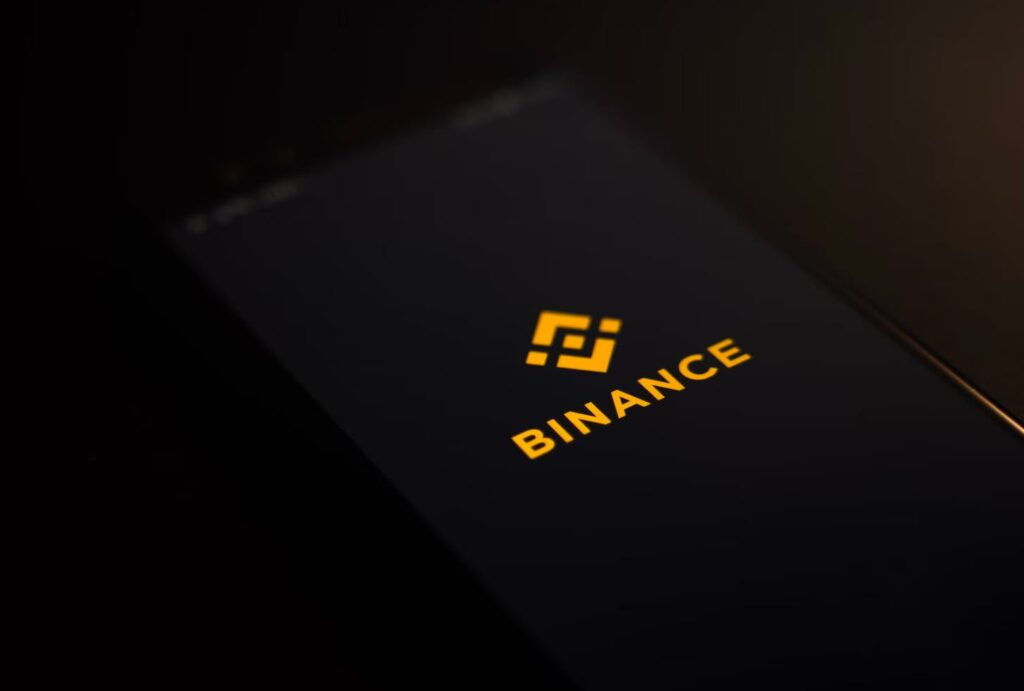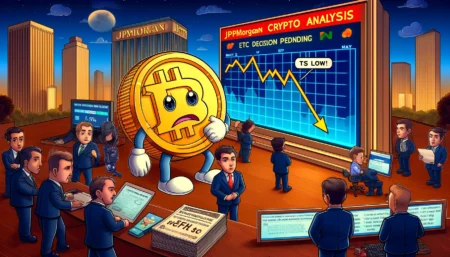There was a major problem in the encrypted exchange FTX, and Alameda increased leverage and heavily invested in FTT, triggering a crisis of market confidence in the two. At this time, another exchange, Binance, released the FTT held to be liquidated. Competitors keep FTX passive. In the confrontation between exchanges, a variety of encrypted assets related to the two parties fluctuated sharply. While investors suffered, the industry was worried that the industry would be affected.
After CoinDesk released the financial documents of Alameda Reseaech, an industry drama was staged. On November 3, Alameda, a quantitative trading agency, was exposed to holding more than $5 billion in FTX platform token FTT, and there was a status quo of high-leverage lending. Alameda was founded by Sam Bankman-Fried, founder of crypto asset trading platform FTX.
Originally, the focus of the doubts was that the financial relationship between Alameda and FTX was not transparent enough. Once the former thundered, it would affect the operation of FTX for many users. Three days later, the news that another trading platform, Binance, will liquidate the remaining FTT on the book completely detonated the market panic. For two days, FTT continued to decline, with a cumulative decline of more than 35%.
There was a problem with FTX. Alameda increased leverage, which triggered a crisis of confidence in the two companies in the industry. Binance’s liquidation news put the opponent FTX in trouble: a large number of users began to withdraw money from FTX, and the problem of delay in withdrawal caused by the run has already appeared. Alameda urgently asked FTX delivery recharge, aggravating the fear of thunderstorms.
Three years ago, Binance was an investor in the FTX start-up, which focuses on crypto asset derivatives trading. At that time, the intimate photo of Binance founder Changpeng Zhao and SBF was widely circulated. The two smiled and shook hands to commemorate. Since then, FTX has gradually emerged as a global comprehensive exchange, becoming more and more close to Binance’s business format, and cooperation has turned into competition. In July 2021, Changpeng Zhao announced his withdrawal from FTX’s investment.
The two platforms broke up, and the respective founders exchanged words on social networks several times, and the confrontation became public. Today, Binance has shown its intentions, and FTX has fallen into a passive state. BNB, FTT, and SOL, which are linked to the two platforms, all fluctuated sharply, and the bear market of crypto assets was exacerbated.
When the two encryption giants battled, the industry began to worry that the industry would be involved, and users became cannon fodder.
Binance claims liquidation of FTT FTX is in a run
According to private financial documents released by Coindesk, as of June 30, Alameda held a total of $14.6 billion in assets, including $3.66 billion in unlocked FTT and $2.16 billion in FTT collateral. Additionally, the agency has $8 billion in debt, including $292 million in locked-in FTT in addition to $7.4 billion in loans.
FTT is the platform token of the encrypted asset trading platform FTX. Alameda’s leveraged and heavy position FTT once again brought its opaque financial relationship with FTX to the forefront. The founders of both companies are SBF. In 2017, he was a trader who founded Alameda, a quantitative trading company for encrypted assets. Two years later, FTX was established.
The two companies are considered important cities in the SBF crypto empire, however, the exposed financial documents set the gates on fire.
Adam Cochran, a partner at crypto investment agency Cinneamhain Ventures, suspects that Alameda borrowed assets from FTX or SBF himself, and cannot understand who would lend Alameda $8 billion with collateral such as FTT, SRM, and SOL.
User 0 xLoki pointed out the dangers posed by Alameda’s balance sheet: severely high leverage in the event of a market decline, a 50% decline would push Alameda into insolvency, while an overly concentrated FTT would give support The DeFi and CeFi markets where the asset is used as collateral brings associated risks.
Questions continued for three days, and on November 6, the outside world finally waited for a response. Alameda co-CEO Caroline Ellison wrote that the balance sheet circulating on the Internet is incomplete and is only a subset of corporate entities, and we have more than $10 billion in assets that are not reflected in the table. He also said that Alameda has now repaid most of its loans, given the tightening in the crypto credit space this year.
This response, without pictures or facts, only explained the financial situation of Alameda, and did not explain the source of FTT in the account. The latter question directly pointed to the financial connection between the institution and FTX, which is related to whether SBF opens the exchange FTX in the front office and the back office. Play FTT with Alameda.
As crypto-asset investors focused on the two companies run by SBF, Binance founder CZ suddenly spoke up. As a former investor of FTX, CZ said that Binance received about $2.1 billion in BUSD and FTT last year for withdrawing part of FTX’s equity. Due to the recent revelations, Binance decided to liquidate the remaining FTT on its books. As for how many FTTs there are, there is no picture or truth.
Although CZ claimed that FTT would be liquidated with minimal market impact within a few months, once such news was released, the impact could not be minimized. FTT fell instantly, from $24.65 to $21.95, a short-term drop of 10.95%. As of November 7, FTT was quoted at $22.7, which has recovered from the low point, but is still at a recent low.
Binance released news of selling pressure to its former partners and now competing companies, but CZ denies that it is aimed at competitors. Co-CEO of Alameda: If Binance really wanted to minimize market impact, we would be happy to buy all FTT from CZ for $22. In this regard, CZ did not publicly accept the recruitment.
As the event fermented, more and more users began to withdraw assets from FTX. According to data from CryptoQuant, FTX’s USD stablecoin reserves collapsed from $900 million, ETH withdrawals rose to an all-time high, with an average daily ETH outflow of about $4.8 million. At the same time, Alameda and FTX are rapidly collecting assets to meet the huge demand for withdrawals. According to on-chain data analysis, Alameda transferred $257 million to FTX within 24 hours, and FTX transferred a large amount of assets from other exchanges back locally.
The emergency delivery was defeated by the sudden run. On the afternoon of November 7th, many users reported that FTX had a problem of delayed withdrawals to accounts. The market’s worries are even deeper. After all, the collapse of the algorithmic stablecoin system LUNA led to the serial liquidation and even bankruptcy of many companies in the crypto industry just over half a year ago. At that time, the failure of some exchanges to propose coins was the prelude to the crisis.
From complementarity to cooperation, from competition to opposition
The problem of Alameda’s heavy holding of FTT has affected investors’ trust in it and FTX, and Binance’s compensation directly put FTX, which is in the limelight, into a run risk. When the already public confrontation between the two sides reappeared, a group photo of CZ and SBF was circulated on the Internet. The two smiled and shook hands to commemorate the cooperation three years ago. That partnership started with complementarity and ended with competition.
On December 20, 2019, Binance strategically invested in FTX. At that time, FTX, which was just established, entered the market with encrypted financial derivatives such as futures contracts, and Binance, which has become well-known around the world, has realized the importance of derivatives. After earning two years of fees from spot trading of encrypted assets, Binance is fed up with the low activity in the bear market environment. Although it has launched the contract business for 3 months, it has been repeatedly scolded by users due to the problem of pin insertion, and the liquidity of the transaction and depth need to be improved.
FTX, which has not yet ventured into spot trading, is complementary to Binance. In the news of the battle investment, FTX also stated that it will provide liquidity for Binance’s over-the-counter (OTC) platform. Relying on Binance’s IP halo, FTX quickly gained popularity. The core team composed of professional traders also handed over products with good experience. Coupled with the idea of low-fee operation, this derivatives platform has risen rapidly in just one and a half years. , the valuation rose from $100 million to $3.5 billion.
However, this capital cooperation came to an end in less than two years.
On July 21, 2021, CZ revealed that Binance relinquished its stake in FTX. The specific reason, CZ did not disclose, only said that Binance completed the exit within the normal investment cycle under good conditions, and emphasized the friendship between the two parties. On the same day as the peaceful breakup, FTX officially announced that it had completed a $900 million Series B financing at a valuation of $18 billion.
Two years after its establishment, FTX not only gradually surpassed BitMEX in derivatives business, but also began to deploy spot trading and OTC business, transforming from a vertical derivatives trading platform to comprehensive trading. In addition, SBF has previously founded Alameda, which has accumulated a lot of U.S. dollar OTC, and FTX has always been one of the largest offshore U.S. dollar and Hong Kong dollar OTC deposit channels.
The $18 billion valuation has made FTX an upstart on the crypto asset exchange track, and the last well-known upstart was Binance.
The two crypto brands are also quite similar in terms of ecological layout. In September 2020, Binance led the launch of the BNBChain (formerly known as BSC) public chain, and its ecological tentacles extended to the decentralized world. In 2021, the Solana SOL -6.15% public chain led by SBF will emerge. Solana and BSC are also competing chains, both of which are compatible with the Ethereum ETH -3.45% network.
There is nothing wrong with cooperation and healthy business competition, but the subsequent plot turns the competition into opposition.
In July of this year, three arrows capital, an investment institution in the encryption industry, went bankrupt and went bankrupt with the lending platform Voyager. FTX announced a $100 million bailout to Three Arrows Capital. CZ tweeted and publicly questioned that Three Arrows Capital owed Voyager hundreds of millions of dollars, causing the creditor to go bankrupt, and Alameda borrowed $377 million from Voyager after investing in Voyager. Why did FTX not pay back the money to rescue the bankrupt Voyager, but gave it to Three Arrows ineffectively A $100 million capital bailout?
The remarks took aim at FTX’s ambiguous financial relationship with Alameda. Soon, SBF, the founders of the two affiliated companies, responded that lending to Alameda was Voyager’s day-to-day business, which was different from the emergency credit that Alameda provided Voyager when the liquidity crisis hit. In addition to responding, SBF replied that CZ did not understand the legal knowledge related to bankruptcy at all.
This is the first time the respective founders have torn their faces in public a year after Binance and FTX split.
The two major exchanges in the crypto world are facing each other
In the three or four days of the event, the crypto asset market fell rapidly. As of 2 pm on November 8, BTC fell from $21,300 two days ago to $19,680, a drop of 7.6%; during the same period, ETH fell from $1,640 to $1,466, a drop of more than 10%.
What is even more painful is the position users of FTT and SOL. Since these two tokens are closely related to FTX, due to concerns about the exchange’s thunderstorm and Binance’s panic, FTT fell further on November 8, and the day before yesterday. In the evening, US$22.7 fell to US$15.85, and fell by 30% in less than 24 hours; Solana’s native token SOL continued to fall from the recent high of US$38.79 to around US$26, a drop of 32.97%.
Binance, which is planning to attack FTX, did not get anything good, and BNB, the underlying token of BNBChain in the ecosystem, fell from $350 to $320, a drop of 8.57%.
In a bear market environment for crypto assets, investor confidence in the market is very fragile. Some users have left messages on the social media of CZ and SBF, hoping that you will reconcile as soon as possible to avoid more harm to the industry.
Indeed, if the daily trading volume is used as the dimension for judging the strength of the exchange, Binance ranks first and FTX ranks second on the encrypted asset data website CoinmarketCap acquired by Binance. Data on November 8 shows that Binance’s 24-hour trading volume was $26.195 billion, while FTX’s 24-hour trading volume was $3.104 billion. On another third-party data site, CoinGecko, Binance still ranks first in 24-hour trading volume, and FTX ranks fourth.
If FTX is regarded as an opponent of Binance, the actual gap is actually very large. For SBF, FTX is making money, but it is not the most valuable card in his hand. When it is paired with a quantitative institution like Alameda, everything may be different, especially when this institution is heavily invested in FTT.
Some users called on SBF to be transparent about FTX and Alameda’s financial situation as soon as possible to regain confidence. Indeed, the crisis of trust is the essential problem facing FTX. The outside world has no way of knowing whether the early investor Binance still has FTT, and whether it will eventually sell FTT, but the situation affecting the market has been formed, and to grasp the initiative to deal with this crisis, FTX announced its asset reserves, clarified its relationship with Alameda. Financial relationships are the way to go.
Crypto KOL bitouq said that if Alameda’s asset structure is really as reported by the media, in the case of a rapid market decline, it may indeed be insolvent, so early disclosure of assets and financial transparency may be the best way to sweep away panic , the market may tolerate the past, but cannot accept the uncertain future.






